How to Optimize Your Woodwork Projects with the Right Reciprocating Saw Techniques
Table of Contents
- Understanding the Basics of Reciprocating Saws for Woodworking
- Choosing the Right Blade: Types and Features for Optimal Cuts
- Mastering Techniques: Proper Grip and Body Positioning
- Achieving Precision: Tips for Smooth and Accurate Cuts
- Safety First: Essential Precautions When Using Reciprocating Saws
- Maintenance Essentials: Keeping Your Reciprocating Saw in Top Shape
- The Ultimate Guide to Choosing the Right Reciprocating Saw Blades for Wood with Nails: S1122VF Review
- FAQS
- Conclusion
- Related Posts
When you're into woodworking, nailing down precision and working efficiently are pretty much essentials. And honestly, the tools you choose really make a difference. I read somewhere recently that the global market for power tools is expected to hit around $41.7 billion by 2027—crazy, right? That just shows how important new cutting techniques and innovative tools are for improving craftsmanship. One tool that really stands out for its versatility and power is the Wood Reciprocating Saw. It’s a real game-changer, letting you cut through all sorts of materials with relative ease.
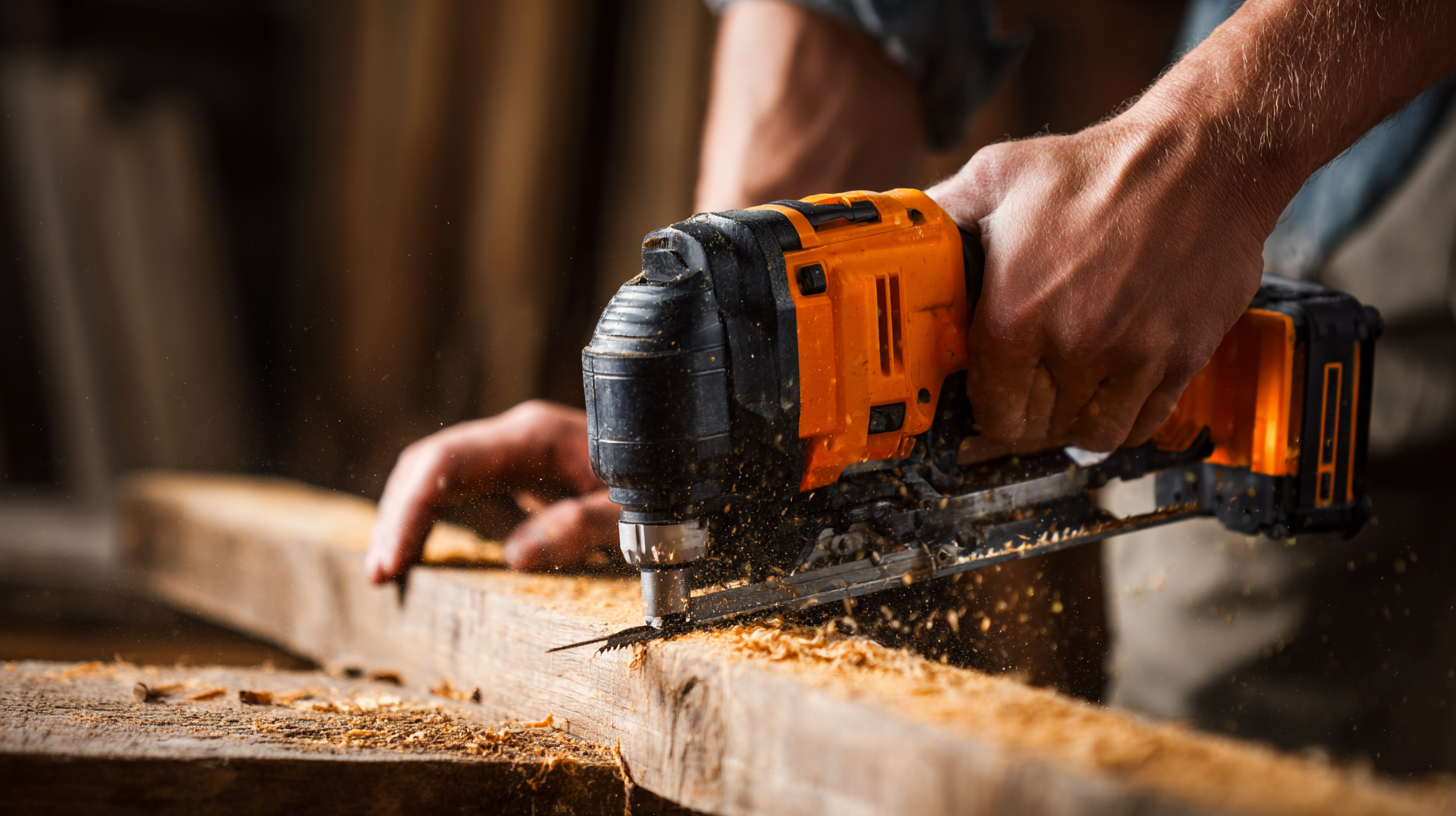
Wenzhou Yichuan Tools Co., Ltd. is a major player in this space and offers top-notch reciprocating saw blades designed for both pros and DIYers alike. When you use the right techniques with a Wood Reciprocating Saw, it helps you get those clean cuts, keeps your workflow smooth, and makes sure you’re making the most of your tools — all adding up to better projects and a more enjoyable woodworking experience.
Understanding the Basics of Reciprocating Saws for Woodworking
Reciprocating saws have really become essential tools in woodworking. They make life a lot easier for craftsmen, letting you work with more precision and efficiency. Honestly, understanding the basics—like what the main parts are and how they work—can make a big difference in how your projects turn out. Did you know that, according to the Freedonia Group, the market for power tools (including these saws) is expected to hit around $24 billion by 2025? That just goes to show how much people are counting on these machines across different industries?
When you're using a reciprocating saw, picking the right blade for the material you're working with is super important. For example, blades made for cutting wood tend to have fewer teeth and are thicker, which helps you cut faster without the blade getting stuck. On the other hand, if you're cutting metal or plastic, you'll want a blade with finer teeth for a smoother finish. Also, double-check that the blade is securely attached before you start—safety and accuracy depend on it.
A few tips to get the most out of your saw: try to cut at about a 45-degree angle for plunge cuts—that's usually the sweet spot. Using a clamp to hold your piece steady can make your cuts cleaner and safer, too. And don’t forget to give the blade and saw mechanism a bit of lubrication now and then—this keeps everything running smoothly and helps the tool last longer.
Choosing the Right Blade: Types and Features for Optimal Cuts
Picking the right blade for your reciprocating saw is pretty important if you want to get those clean, professional-looking cuts in your woodworking projects. It might seem a bit overwhelming with all the options out there, but understanding the different types can really make a difference. For example, bi-metal blades are pretty versatile—they’re flexible and durable, so they can handle just about any material you throw at them. On the other hand, carbides-tipped blades are great if you’re working with tougher woods and need something that lasts longer.
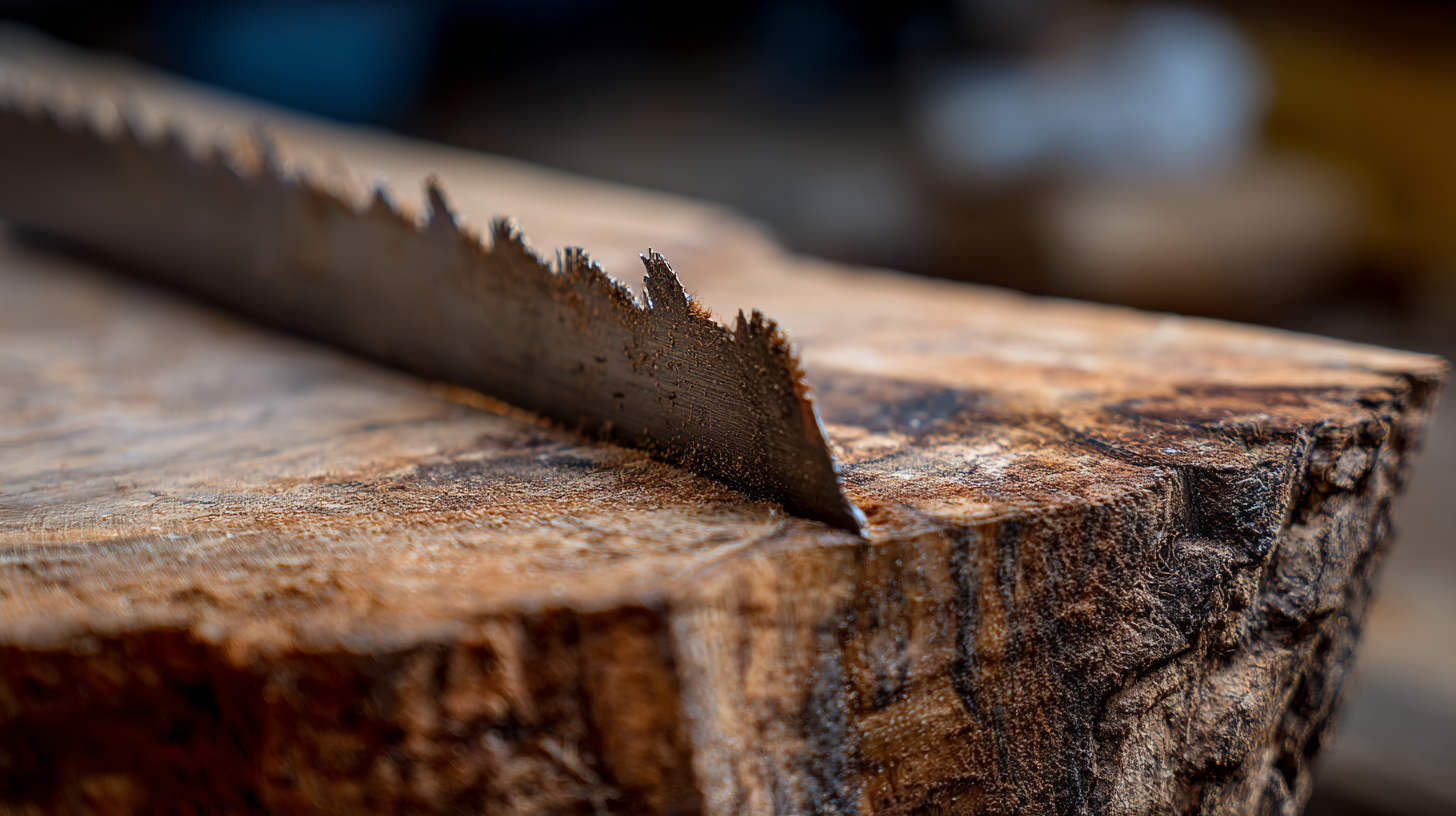
Don't forget to think about more than just the material—things like tooth design and spacing matter too. Blades with lots of teeth usually give you smoother, finer cuts, which is perfect for detail work. If you’re after speed and rougher cuts through thicker wood, fewer teeth might be better. Thanks to our advanced manufacturing processes, our blades stay sharp and keep performing well over time. By choosing the right kind of blade and features, you'll find that your woodworking becomes cleaner, easier, and way more enjoyable.
Mastering Techniques: Proper Grip and Body Positioning
When you're getting the hang of using a reciprocating saw for your woodwork projects, nailing your grip and body stance really makes a difference — not just for getting the job done efficiently, but also for staying safe. Gripping the saw firmly helps you keep better control, which means fewer slips or accidents, and it also makes your cuts more precise. To do this right, hold the main handle with your dominant hand and use your other hand on the front grip. It might feel a bit awkward at first, but this two-handed grip really steadys the saw, especially if you're making a tough cut or pushing harder.
Your body position matters just as much as your grip. Stand with your feet about shoulder-width apart—it really helps with balance. Keep your body aligned with the cut you’re working on, and lean a little forward, engaging your core. That’ll give you better stability and make it easier to apply the right amount of pressure. Also, keep your elbows close to your sides—that not only gives you more control but also helps prevent fatigue if you're at it for a while. Pay attention to your grip and stance, and you'll notice your work quality improves, plus it’s safer for you too.
Achieving Precision: Tips for Smooth and Accurate Cuts
Hey, if you're into woodworking and want to get those really precise cuts, using the right techniques with your reciprocating saw can make all the difference. One tip I’ve picked up is to keep your hand steady and make sure you’re following a clear line — it’s easier said than done sometimes! Using tools like laser guides or LED lights can really help you see where you're cutting, so your lines stay nice and straight. And honestly, taking it slow and steady, especially as you near the end of a cut, helps prevent splintering and leaves you with a much cleaner finish.
Another thing that matters a lot is picking the right blade for the job. Different blades are made for different materials, so using the correct one can turn a jagged mess into a smooth, professional-looking cut. Also, don’t forget to keep your saw in good shape—regular maintenance and checking alignment make everything easier and give you more consistent results. Follow these tips, and not only will your work look better, but you'll also find projects go a lot smoother and quicker. Trust me, a little extra care can really make a big difference!
Woodwork Project Precision with Reciprocating Saw Techniques
Safety First: Essential Precautions When Using Reciprocating Saws
Whenever you're using a reciprocating saw, safety should always come first—no exceptions. Industry experts consistently recommend donning proper protective gear like safety goggles, gloves, and hearing protection, and honestly, it's not worth risking it. Did you know that a good chunk of tool-related injuries happen because folks skip safety precautions or don’t use the right gear? One simple tip: make sure you grip the saw firmly and keep your footing steady—that way, you're much less likely to have an accident. Oh, and don’t forget to check your blade’s sharpness; dull blades can cause kickbacks, which are a common root of injuries among woodworkers.
Also, a little advice from the pros: picking the right reciprocating saw for your project makes a big difference—not just in how well it works, but also in keeping you safe. The latest reviews show that features like vibration reduction and ergonomic designs really help reduce fatigue and give you better control. Trust me, taking these small steps not only makes your woodworking smoother but also keeps you safe from nip-ups with those powerful tools. As they say, 'Safety first,' and honestly, following these tips can make all the difference between a good day in the shop and one that’s full of headaches—and injuries.
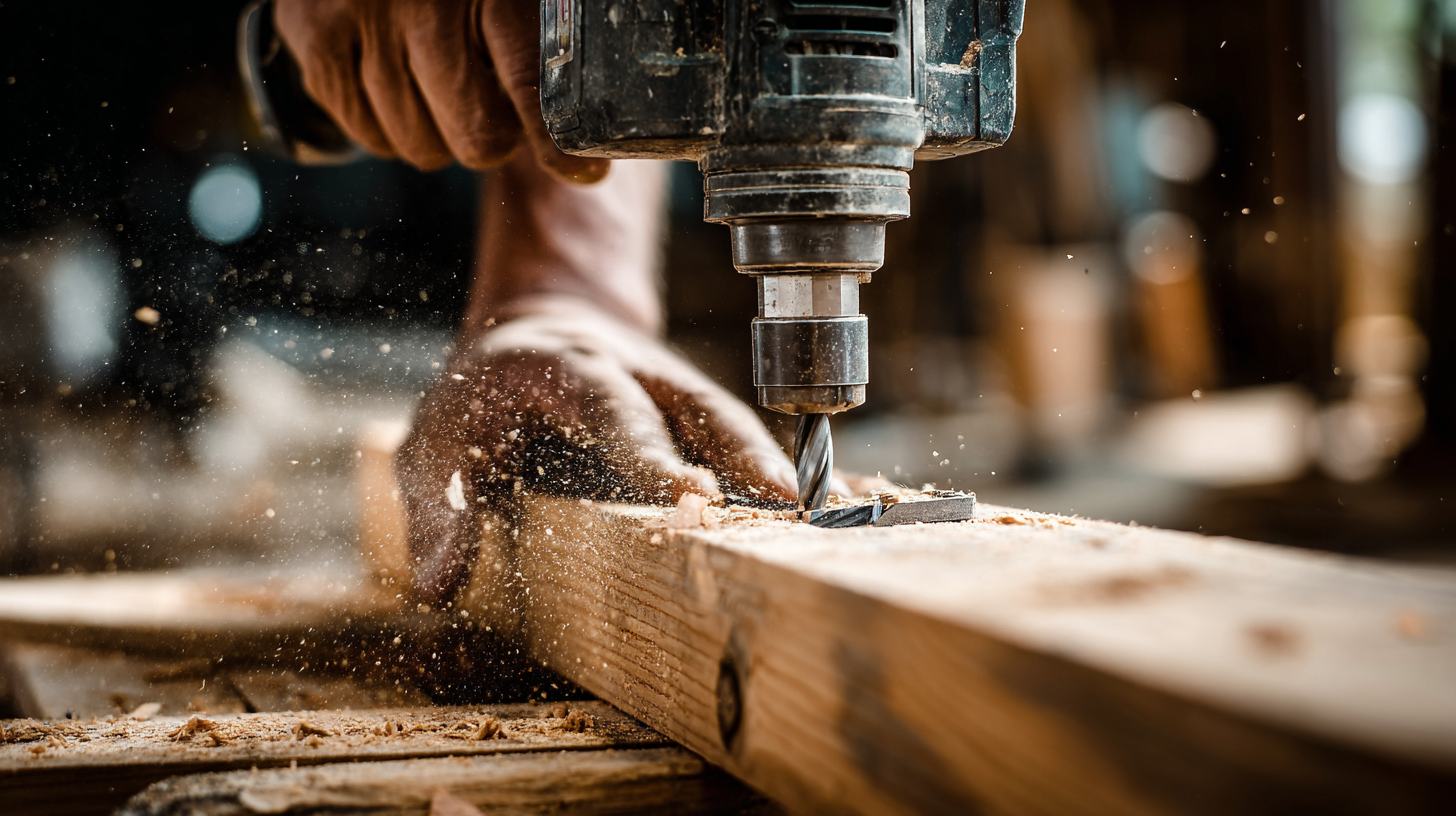
Maintenance Essentials: Keeping Your Reciprocating Saw in Top Shape
If you want your reciprocating saw to keep working like a champ, regular maintenance is a must. I came across this report from the Power Tool Institute that says tools well taken care of can actually last up to 50% longer—that's pretty impressive, right? One of the easiest ways to make sure your saw stays in top shape is by keeping the blade sharp and free of debris. Not only does that make cutting easier, but it also puts less strain on the motor, helping prevent it from overheating when you're pushing through dull blades.
And honestly, don't forget to give the saw’s mechanism a bit of love regularly. Dust, wood shavings, you name it—these can pile up in the housing and cause performance issues or even failures. According to the National Tool and Equipment Association, about 30% of tool failures happen because people skip routine cleaning and maintenance. Making sure the moving parts are lubricated and the battery connections are squeaky clean can really make a difference. Follow these simple tips, and you’ll not only get more out of your saw but also stay safe during your projects. Trust me, a little regular care goes a long way!
How to Optimize Your Woodwork Projects with the Right Reciprocating Saw Techniques - Maintenance Essentials: Keeping Your Reciprocating Saw in Top Shape
| Technique | Description | Maintenance Tip |
|---|---|---|
| Proper Blade Selection | Choose the right blade for the material being cut to optimize performance and finish. | Regularly check blade condition and replace if dull or damaged. |
| Control Speed Settings | Adjust the speed to match the material to ensure cleaner cuts and less wear. | Clean speed settings and monitor for functionality every month. |
| Maintain Stability | Use clamps to stabilize the material while cutting to improve safety and accuracy. | Inspect clamps regularly for wear or damage, replace as needed. |
| Utilize Cutting Guide | Implement a cutting guide for straight cuts to enhance precision. | Store cutting guide properly to prevent warping or damage. |
| Regular Cleaning | Keep your reciprocating saw free of dust and debris for optimal performance. | Clean body and mechanism after each use using a soft brush. |
The Ultimate Guide to Choosing the Right Reciprocating Saw Blades for Wood with Nails: S1122VF Review
When selecting the ideal reciprocating saw blades for wood that has nails, the performance of these blades is critical. The S1122VF model stands out by providing exceptional versatility and strength, particularly effective for users needing to cut through not just wood, but also embedded metal. With its bi-metal construction, this blade ensures durability and a longer lifespan, making it suitable for rigorous job sites.
One of the key advantages of the S1122VF is its ability to handle thick metal materials ranging from 2 to 8mm. Whether you are tackling aluminum, sheet metal, pipes, or profiles, this blade can efficiently cut materials from 10 to 150mm in thickness. The straight cutting design is particularly beneficial when encountering wood with nails, as it minimizes the risk of damage to both the blade and the material being cut, allowing for clean and precise cuts every time.
Choosing the right blade for specific applications can significantly impact your project’s efficiency and quality. The S1122VF provides not only excellent cutting capabilities through multiple materials but also enhances the overall experience by reducing the hassle of frequent blade replacements. For anyone working on carpentry or renovation projects that involve metal reinforcements in wood, investing in this reciprocating saw blade is undoubtedly a smart choice.
FAQS
: Reciprocating saws are indispensable tools in woodworking that allow craftsmen to perform tasks with precision and efficiency, making them crucial for various woodworking projects.
Selecting the right blade depends on the material you're cutting. For wood, choose blades with fewer teeth and thicker profiles, while blades for metal or plastic should have finer teeth for smoother finishes.
It is recommended to aim for a 45-degree angle when performing plunge cuts to optimize your cutting technique.
Regular maintenance can improve a reciprocating saw's lifespan by up to 50%. It enhances cutting efficiency, reduces motor stress, and helps prevent overheating issues associated with dull blades.
Key maintenance practices include keeping the blade sharp, regularly cleaning the saw's mechanism, lubricating moving parts, and ensuring battery connections are clean.
Bi-metal blades are versatile and durable for a variety of materials, while carbide-tipped blades are recommended for tougher woods. High tooth count blades provide smoother cuts for fine woodworking.
To optimize cutting performance, choose the appropriate blade type, maintain sharpness, practice proper cutting angles, and use clamps to stabilize workpieces.
Neglecting maintenance can lead to operational failures, as dust and debris accumulation can affect performance, and dull blades can cause overheating and stress on the motor.
Blade design influences performance by varying tooth count and spacing; blades with fewer teeth allow for faster, rougher cuts, while blades with higher tooth counts produce smoother finishes for fine woodworking.
Regular lubrication ensures that the saw mechanism operates smoothly, preventing wear and tear, and should be done routinely to maintain optimal performance.
Conclusion
Getting the most out of your woodworking projects really comes down to understanding how to use your Wood Reciprocating Saw properly. Starting with the basics, it’s super important to pick the right blade – considering different types and features – so you get nice, clean cuts without any headaches. Once you get the hang of it, mastering your grip and body stance can make a huge difference, giving you better control and helping you make smoother, more precise cuts. And hey, little tips for accuracy can really take your work to the next level, leaving you with a cleaner, more professional finish.
Of course, safety should always be your top priority. Never skip on safety measures; it’s key to avoiding accidents when you’re wielding a reciprocating saw. Oh, and don’t forget about maintenance—keeping your saw in good shape means it’ll last longer and perform reliably every time you pick it up. At Wenzhou Yichuan Tools Co., Ltd., we’re all about providing top-quality reciprocating saw blades because we want to support both seasoned pros and DIY enthusiasts. Our goal is to help you craft your woodworking projects with ease and confidence, every step of the way.
Related Posts
-

Understanding Repair Costs and After Sales Advantages of Best Reciprocating Saw Types Guide
-

Issues with Selecting the Right Reciprocating Saw Blades for Tree Pruning
-

Navigating Import Export Certifications for Best Sabre Saw Blades in Global Markets
-
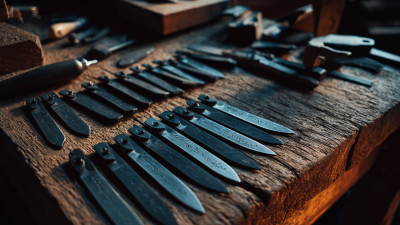
7 Best Metal Reciprocating Blades for Precision Cutting
-
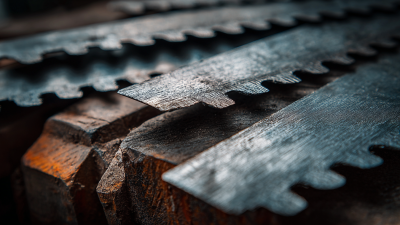
Understanding the Common Challenges with 12 Inch Hacksaw Blades in Global Supply Chains
-
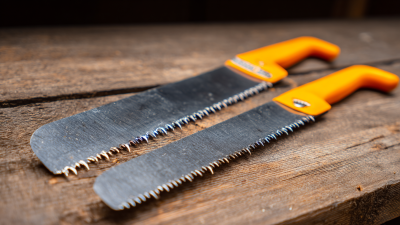
Ultimate Checklist for Choosing the Right Toolstation Reciprocating Saw Blades for Every Job
Blog Tags:





